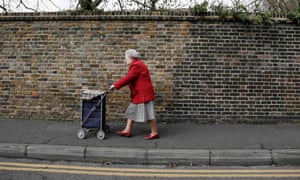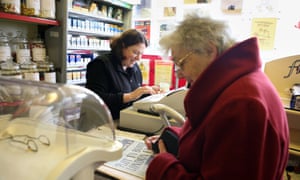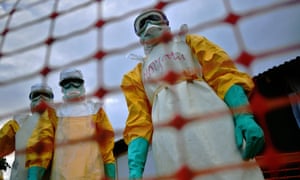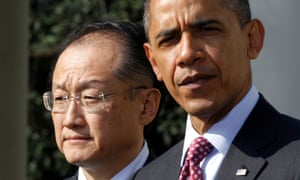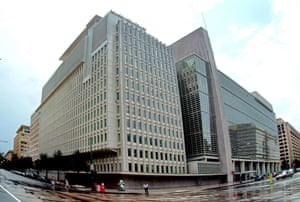Under the false pretense of improved food and drug safety the FDA re-invented itself as a kingpin drug company sucking in virtually all members of Congress.
The Bush administration figured out that the fastest way to get the FDA out of the way of Big Pharma’s profits was to appoint FDA critics to key positions, thereby changing the FDA from within.
This began in August of 2001 when Bush appointed Daniel Troy as chief counsel of the FDA, a man best known for defending tobacco companies. Mr. Troy invited Big Pharma to submit cases to him so that the FDA could help Big Pharma defeat citizens who were complaining that drugs and medical devices injured them.
This resulted in legal case precedent that ties up damage claim cases indefinitely and creates “trade secret laws” wherein the FDA claims it is legally obligated to withhold drug risks from the public to protect Big Pharma’s proprietary knowledge.
Then Bush appointed some naive doctor to the number two position at the FDA, even though he was a young and inexperienced physician with no expertise in drug safety — just a major agenda to bring unproven drugs to the market with far less safety or effectiveness testing for the benefits of Wall Street.
Bush’s appointments like this were just warm-ups. His appointment that floored the drug-safety world and sent well-intentioned FDA employees running for cover was the appointment of Andrew von Eschenbach to head the FDA, an appointment that the Senate made permanent in a Lame Duck session.
This resulted in the FDA being headed by a representative of the pharmaceutical and biotech industries.
So, this guy, von Eschenbach, is a founding member of C-Change, short for Cancer Change (originally called The National Dialogue on Cancer) — a group that was created and funded in 1998 by the American Cancer Society.
This group has become a conglomeration of the most powerful players in the cancer treatment industry. Their unstated goal is taking the national cancer agenda away from the public sector and placing it into private for-profit hands.
The group is headed by former President Bush and his wife, Barbara. Until recently von Eschenbach was the vice chairman of the board. Since becoming permanent head of the FDA he relinquished his board position and is now only a member.
Von Eschenbach is an oncologist by trade, a cancer survivor himself, and had a long career running the MD Anderson Cancer Center in Texas. He parlayed his close relationship with the Bushes and cancer-industry players into an appointment to head the National Cancer Institute (January 2002).
And so began the final stages in the transfer of power from public health interests to Big Pharma and Big Biotech..
On February 22, 2002, Diane Feinstein (D-CA), the only Senator that was a member of C-Change, introduced The National Cancer Act of 2002 (S.1976).
While this legislation never became law, it was quite telling as regards the C-Change plan — to shift the national cancer agenda and funding away from the public interest and into the hands of the American Cancer Society, C-Change, and related pharmaceutical companies.
Astonishingly, then director of Health and Human Services Tommy Thompson approved a waiver allowing von Eschenbach to remain vice chairman of C-Change while heading NCI, a dramatic conflict of interest.
Tommy Thompson, like von Eschenbach, is a founding member of C-Change. During the von Eschenbach rein at NCI hundreds of millions of dollars in research grants were channeled to his C-Change friends and away from basic cancer research and public health measures relating to easily preventable cancers.
As head of NCI, von Eschenbach reorganized its administration bringing in a new layer of management spearheaded by the chairperson of the C-Change cancer research team and former biotech CEO, Anna Barker, Ph.D.
Part of this new team included C-Change member Mark Clanton, M.D., as deputy director for cancer care and delivery. This C-Change management team met behind closed doors, setting NCI priorities independent of NCI’s traditional scientific advisors.
Von Eschenbach then funneled NCI money into Big Biotech projects relating to genomic-based cancer research, nanotechnology, proteomics, and the establishment of biomarkers relating to disease and cancer identification.
While such innovative projects are on the one hand admirable, they are quite detached from the real-world issues that cause cancer in many Americans and are in many ways a diversion from what should be done now to realistically help many people not get cancer.
Furthermore, there is no near-term tangible result. The problem for all of this type of research is how to get potential products to the market when the cost for drug development is so high and the FDA has no guidelines as to how these drugs even work or can be monitored for safety.
The FDA “solution” to this problem, announced in March of 2004, was to set up a collaboration with industry to design the next generation of drugs. This plan is called the Critical Path Initiative and it refers to streamlining the path for approval to get new drugs on the market faster with less expense and less testing for safety or effectiveness.
Let me point out that the entire Critical Path Initiative, admirable as it may seem, produced an increase in public health disasters like Vioxx. This is because the FDA (or more specifically von Eschenbach and friends) think the pharmaceutical industry’s problems are all based on a failure to get approval of new drugs fast enough.
In reality, the pharmaceutical industry’s real problem is a failure to get results in the marketplace. When a new drug is approved very little is actually known about how it will perform in the real world.
This problem is complicated by direct to consumer promotion that typically misrepresents the drug, massive off label promotion and use of the drug, and no system that monitors what is really happening with the drug as it is used.
By rushing more drugs onto the market faster, the failure to get results issue will be magnified — and the safeguards proposed in the Senate bill were inadequate and any savings in the cost of bringing a drug to market will be offset by the costs of lawsuits related to damages.
The FDA was trying to “solve” that problem by preventing citizens from suing drug companies when an FDA-approved drug injures or kills. Von Eschenbach and the FDA have pushed forward with this very misguided marketing strategy, which is evident today
In June of 2004 von Eschenbach’s NCI awarded SRI International a long term grant to evaluate the safety and pharmacology of these new biological drug cancer treatments and more related grants have followed.
SRI specializes in cancer biology and toxicology research, as well as helping to patent, license, and spin off inventions into commercial applications.
SRI also does extensive work for the Department of Defense and Homeland Security. Some of SRI’s largest clients besides government are the Rockefeller Foundation, the Ford Foundation, and the Bill and Melinda Gates Foundation.
In March of 2005 the FDA announced its first Critical Path collaboration known as the C-Path Institute in Tucson, Arizona. This was a collaboration between the University of Arizona, the FDA, and SRI International.
One of its first projects was the establishment of cardiovascular biomarkers, working in conjunction with the University of Utah. Following this announcement, the governors of the States of Arizona and Utah joined C-Change.
Conflict of interest reached a new level in October of 2005 when President Bush appointed von Eschenbach as temporary head of the FDA, a position he took while maintaining his roles as head of NCI and as vice chairman of the board of C-Change.
Once von Eschenbach took over at the FDA, and eventually gave up his role at NCI, his main priority became promoting the Critical Path Initiative (not food or drug safety).
He worked diligently with Senators Mike Enzi (R-WY) and Edward Kennedy (D-MA) to create a vehicle within the FDA to develop the next generation of biotech drugs. In previous year’s version of this legislation (which never came out of committee), this project was called The Reagan-Udall Institute for Applied Biomedical Research. This legislation would have set up the Institute within the FDA.
In 2006, Kennedy and Enzi tacked this piece of legislation onto required FDA funding, lumping numerous FDA issues into one huge bill (S.1082) and telling everyone it is a safety bill.
Within this new legislation was the creation of the Reagan-Udall Foundation for the FDA, set up as an independent non-profit Foundation that was under the control of the FDA. The Senate fought bitterly over various drug-safety issues unrelated to the Reagan-Udall Foundation, as if these issues acted as a smoke screen to slip past members of the Senate the creation of the Reagan-Udall Foundation for the FDA, the von Eschenbach dream come true.
Not a single Senator raised one concern about the significant safety issues inherent in the Critical Path Initiative/Reagan-Udall Foundation or conflicts of interest when Big Pharma and the FDA worked side by side to develop, patent, and license drugs.
The entire history of von Eschenbach’s relationship with Big Pharma, Big Biotech, and C-Change was conveniently ignored. The issue moved to the House, where the Representatives were as poorly informed as the Senators as to what is actually going on.
Yes, the FDA was going into the drug development business. According to Senate Bill S.1082, the purpose of the Foundation was to advance the mission of the Food and Drug Administration to modernize medical, veterinary, food, food ingredient, and cosmetic product development, accelerate innovation, and enhance product safety.
It would do this by taking into consideration the Critical Path reports and priorities published by the Food and Drug Administration, identify unmet needs in the development, manufacture, and evaluation of the safety and effectiveness, including post-approval, of devices, including diagnostics, biologics, and drugs, and the safety of food, food ingredients, and cosmetics.
The board of directors was composed of four primary members: the Commissioner of the FDA, the Director of the National Institutes of Health, the Director of the Centers for Disease Control and Prevention, the Director of the Agency for Healthcare Research and Quality.
These members then selected the remaining board members to be composed of 4 representatives from Big Pharma and Big Biotech, 3 representatives from academia (which is funded by Big Pharma), 2 more from the FDA and NIH, 2 from consumers groups, and 1 from health care providers.
This meant that the FDA/Big Pharma/Big Biotech voting block always had 13 votes — to at the most 3. An executive director of the Foundation was appointed by the board and served at the pleasure of the board.
The bill said the Foundation will ensure that “action is taken as necessary to enable the licensing of inventions developed by the Foundation or with funds from the Foundation; and (C) executed licenses, memoranda of understanding, material transfer agreements, contracts, and other such instruments, promote, to the maximum extent practicable, the broadest conversion to commercial and noncommercial applications of licensed and patented inventions of the Foundation.”
Since the Foundation was responding to the needs of the Critical Path Initiative, and that initiative was primarily about the development of new drugs, it was clear that the Foundation wouldl not only help with drug development but it would have significant business relationships as a result.
Do not be confused by the Foundation’s non-profit status, this was simply a useful vehicle that SRI International has used to coordinate collaboration while securing patents and licenses and then spinning off business ventures.
The FDA tried to reduce its legal liability to the federal government by setting up the Regan-Udall Foundation as a non-profit, in case the drugs it helped design injure or kill people. Make no mistake about it, the FDA would be fully in control of the Reagan-Udall Foundation for the FDA. Once this became law by September 30, 2007, we entered a new era with the FDA as a quasi drug company.
It is indeed disturbing that SRI International is intimately involved with the drug development process and has equally extensive connections with Homeland Security and the Defense Department.
It would be far easier to make biological weapons that disrupt gene function than it would be to cure anything, in terms of initial applications of Critical Path technology.
So, this was an international problem that caused an arms race of a new sort, as the Reagan-Udall licensed technology moved out into the world and not only created a generic biotech drug industry but a generic biotech military industry.
On the drug development side von Eschenbach planed to replace clinical trials that showed positive outcomes such as true improvement in the medical condition or improved life expectancy with studies based on biomarkers or surrogate endpoints.
Biomarkers were the sign posts that pointed the way, but do not guarantee that anything positive is actually happening and this concept lowered the safety and effectiveness testing required to get an approval, a key theme of the Critical Path Initiative.
This use of biomarkers, in and of itself, represented a drastic reduction in safety for Americans. One example of this problem was the Avandia scandal, wherein the drug was approved based on its ability to lower blood sugar (a surrogate endpoint or biomarker).
It turned out that the drug does so while increasing the risk for heart failure, heart attack, and mortality.
Over an eight-year period it was turned into a blockbuster drug with sales of 3.2 billion a year. During this time the FDA sat on the known risks and did almost nothing to determine the aftermarket safety of the drug.
The problem was actually exposed by an independent researcher. Based on the previous year’s drug sales and the increased risk for heart attack, it was likely that 35,000 people needlessly died that year alone.
So, how would independent researchers expose problems in the future when all of the advance technology required to evaluate the issue was part of an FDA-controlled monopoly?
Biotech drugs are inherently dangerous as they throw gene switches and powerfully influence functions of the body. This is like having the discovery of matches to light fires and not having any firefighting equipment or technology.
Take the biotech company Amgen, with annual sales of 14.3 billion in 2006, and nearly half that revenue coming from two biotech drugs, Epogen and Aranesp, used in kidney disease.
Aranesp was the blockbuster with 4.1 billion in sales for 2006, and was also used to treat anemia during chemotherapy. Amgen stock and sales were taking a beating because these drugs posed a significant risk for increased death when used, and doctors keep using them in an inappropriate way even though the FDA has warned them not to.
The FDA then scrambled to contain the damage the drug caused without making Amgen look bad. If not, the whole fast track approval of new biotech drugs as envisioned by the Critical Path Initiative and Reagan-Udall Foundation was in jeopardy.
Why, because these Amgen drugs were approved by the FDA based on biomarkers, not based on improved patient outcomes.
So, an FDA Advisory panel was surprised to find how little testing Amgen did to demonstrate these drugs were safe or actually improve the patient’s health and Amgen has a long history of involvement with the American Cancer Society and its fundraising activities.
The question was, will an FDA chief that was beholden to the same circle of friends and a true believer in what Amgen stands for actually be able to objectively regulate the company and protect patients from danger? Or will the profits of the drug company and image of the Critical Path Initiative be more important?
There was a time when a patient walking into the doctor’s office actually had a meaningful conversation. The amount of time spent and the type of lab work or diagnostics performed were not constrained by managed care. To the best of the doctor’s ability, the patient was given personalized care in the best interest of the patient.
Patient centered care was replaced by time constraints, minimized diagnostics, and maximized dispensing of questionable drugs. All of these problems are about to get significantly worse, as we entered the new era of von Eschenbach’s concept of personalized medicine, based on genomics and proteomics.
Then, a flood of new biotech drugs hit the market, resulting in numerous Avandia and Vioxx-like scandals. Congress, with 20-20 hindsight, held hearings that resulted in legislation to improve safety.
Von Eschenbach told Congress that the fault is not the drugs. Rather, it is the inability to personalize those drugs to specific patients that is the problem.
Von Eschenbach would love to say that eternally, but he knows he doesn’t have the technology ready to implement the plan as he would in five years.
So, he was willing to put the lives of hundreds of thousands of innocent Americans in jeopardy by exposure to barely tested biotech drugs and recklessly push forward with his Critical Path Initiative plan.
The Von Eschenbach solution was to evaluate the blood of every patient taking the drug with the FDA’s sophisticated biomarker software. The FDA had already developed the early stages of this software and would continue to perfect its new system of medicine over the next decade.
Making a long story short, in order to receive medical care your blood would be evaluated by an FDA-controlled super computer, your genes would be profiled, your genetic weaknesses would be part of your medical record, and you would have an RFID chip in your arm storing your complex biological medical records, tracking your vital signs, and monitoring your whereabouts.
If doctors think they have it bad now just wait until they become slaves to the FDA computer’s directions and drug prescriptions — which will no doubt be the latest and most expensive biotech drug experiment
The FDA knew that most of its Critical Path technology was years from practical application, and it was confronted by the problem of maintaining funding while not much is happening.
One aspect of this technology was very advanced toxicology tools, tools required for the development of new drugs. In January of that year the FDA issued a press release saying they wanted to use Critical Path science to develop tools to assist with their regular FDA duties:
Scientific advances held the potential to improve the tools FDA used to evaluate the safety and efficacy of human and veterinary products as well as the safety and nutrition of food and food ingredients (e.g., new rapid tests for biological and chemical contamination of animal-derived foods, technologies for detecting and mitigating the microbial contamination of food, analysis technologies for assessing the safety and nutritive value of foods and food ingredients).
While any person that was in favor of the FDA being able to better identify contamination in food, such as infectious E.coli, assessing the safety of food and food ingredients was an entirely different matter. Similar language had been written into S.1082 in the section on the Reagan-Udall Foundation for the FDA, meaning the FDA was seeking to have it written into law where it could use Critical Path toxicology assessment to determine the safety of food ingredients (i.e., dietary supplements). This became the vehicle for the FDA to be able to remove any dietary supplement it desired from the market at its whim.
The supplements most likely to be removed were those that competed with Big Pharma and Big Biotech drugs, especially those drugs produced by the Reagan-Udall Foundation itself. S.1082 already contained the troublesome wording.
The battle then moved to the House where it was vital to get an amendment into this legislation that would protect dietary supplements without interfering with the FDA’s ability to identify true food contamination problems. That amendment has been prepared by Jonathan Emord, the nation’s top health freedom attorney.
protect consumers from having dietary supplements evaluated using drug-related risk benefit analysis. In addition to the Emord amendment it will be essential to protect ourselves from the FDA’s internal conflicts of interest that pervade the agency.
As things are now the FDA was more concerned about looking good and protecting its image than it was about drug safety or allowing unfettered access to safe and effective forms of natural health options.
Alternative therapies and dietary supplements are the true competition to the FDA’s Big Pharma and Big Biotech medical model it was seeking to cram down the throats of all Americans
Well, here we are in 2016, and it’s worse. Keep people sick at all costs to keep the profits coming in.
Source: Byron Richards: Wellness Resources
P.S. Adding insult to injury, Nostradamus said our black President would be our last President. The word on the street is that Hillary gets elected, Is then arrested and indicted by the FBI for her crimes before she is sworn in, Obama stays in office for another four years, and the Constitution bites the dust.
To learn more about Hesh, listen to and read hundreds of health related radio shows and articles, and learn about how to stay healthy and reverse degenerative diseases through the use of organic sulfur crystals and the most incredible bee pollen ever, please visit www.healthtalkhawaii.com, or email me at heshgoldstein@gmail.com or call me at (808) 258-1177. Since going on the radio in 1981 these are the only products I began to sell because they work.
Oh yeah, going to www.asanediet.com will allow you to read various parts of my book – “A Sane Diet For An Insane World”, containing a wonderful comment by Mike Adams.
In Hawaii, the TV stations interview local authors about the books they write and the newspapers all do book reviews. Not one would touch “A Sane Diet For An Insane World”. Why? Because it goes against their advertising dollars.
How the FDA Became a Drug Company


